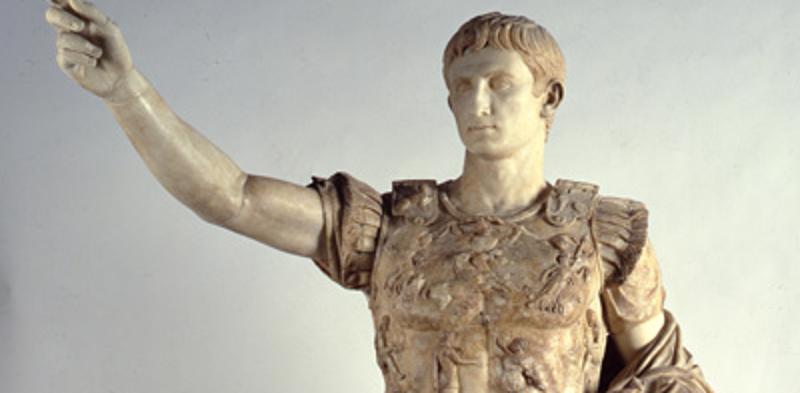My diary
http://mv.vatican.va/4_ES/pages/z-Patrons/MV_Patrons_04_03.html
The Augustus of Prima Porta is a cultural landscape that exposes the viewers who view this statue the story of Augustus’ life. It is so interesting how the Romans are able to depict information that could fill a book simply through carving marble. The baby grasping the pedestal reveals the story of the mythology and ancestry of Augustus. The baby is cupid and he is signifying the lineage and favor of the dogs representing that he is of the line of Athena. This is a powerful statement that this sculpture depicts. Augustus was a controversial figure. The sculpture depicts the juxtapositions that his character embodied. He was clothed in a robe, which at the time was usually this type of adornment was worn by civilizations, this was a
kmullen1
22 chapters
16 Apr 2020
Rome 2017: (11) Augustus of Prima Porta
http://mv.vatican.va/4_ES/pages/z-Patrons/MV_Patrons_04_03.html
The Augustus of Prima Porta is a cultural landscape that exposes the viewers who view this statue the story of Augustus’ life. It is so interesting how the Romans are able to depict information that could fill a book simply through carving marble. The baby grasping the pedestal reveals the story of the mythology and ancestry of Augustus. The baby is cupid and he is signifying the lineage and favor of the dogs representing that he is of the line of Athena. This is a powerful statement that this sculpture depicts. Augustus was a controversial figure. The sculpture depicts the juxtapositions that his character embodied. He was clothed in a robe, which at the time was usually this type of adornment was worn by civilizations, this was a

choice to signify Augustus’ movement of peace in order to create a façade away from his militaristic intentions. The artist depicted his true intentions by covering the robe with a breast plate to signify his warrior like leadership and success in battle. On the shield is sculpted the enemies in which Augustus fought and defeated. This cultural landscape represents the tensions felt during the Augustine period and the stratification of Augustus’ character and aspirations.
1.
Rome 2017: Overview
2.
Rome 2017: (1) The Colomn of Trajan
3.
Rome 2017: (2) The Capitoline Wolf and The Twins
4.
Rome 2017: (3) The Alter of Peace (Ara Pacis)
5.
Rome 2017: (4) The House Of Vestal Virgins
6.
Rome 2017: (5) The Bust of Constantine
7.
Rome 2017: (6) The Equestrian Sculpture of Marcus Aurelius
8.
Rome 2017: (7) The Miliarium Aureum
9.
Rome 2017: (8) The Dying Gaul
10.
Rome 2017: (9) The Head of Lucius Junius Brutus
11.
Rome 2017: (10) The Boxer at Rest
12.
Rome 2017: (11) Augustus of Prima Porta
13.
Rome 2017: (12) Saint Paul's Statue
14.
Rome 2017: (13) Moses
15.
Rome 2017: (14) Santa Sabina
16.
Rome 2017: (15) The Holy Stairs
17.
Rome 2017: (16) The School of Athen's
18.
Rome 2017: (17) Disputation over the Holy Sacrament
19.
Rome 2017: (18) Saint John’s Lateran
20.
Rome 2017: (19) Danae
21.
Rome 2017: (20) Victor Emmanuel II
22.
Rome 2017: Conclusion
Share your travel adventures like this!
Create your own travel blog in one step
Share with friends and family to follow your journey
Easy set up, no technical knowledge needed and unlimited storage!
© 2025 Travel Diaries. All rights reserved.